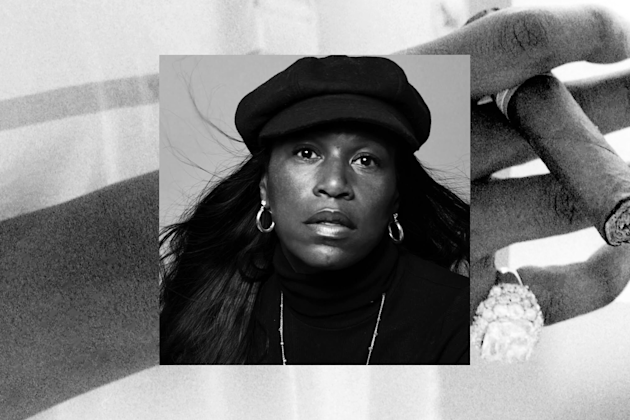Nora Khan gets experimental with artists.
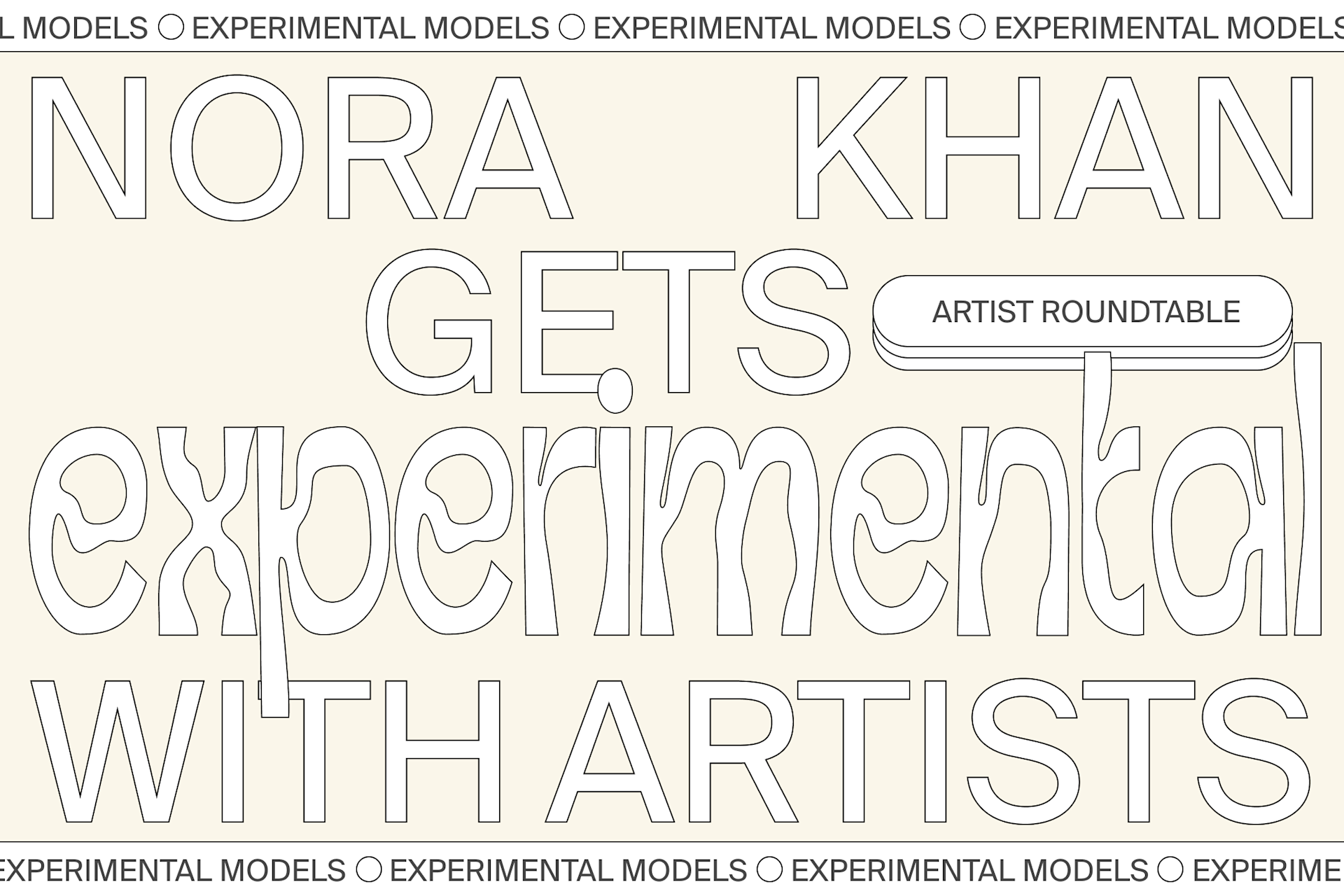
For this roundtable conversation, curator Nora Khan was joined by Mark Dorf, Danielle Brathwaite-Shirley, Umber Majeed, and Ziyang Wu—4 of the 10 artists assembled for the exhibition Experimental Models on Foundation, in support of Topical Cream.
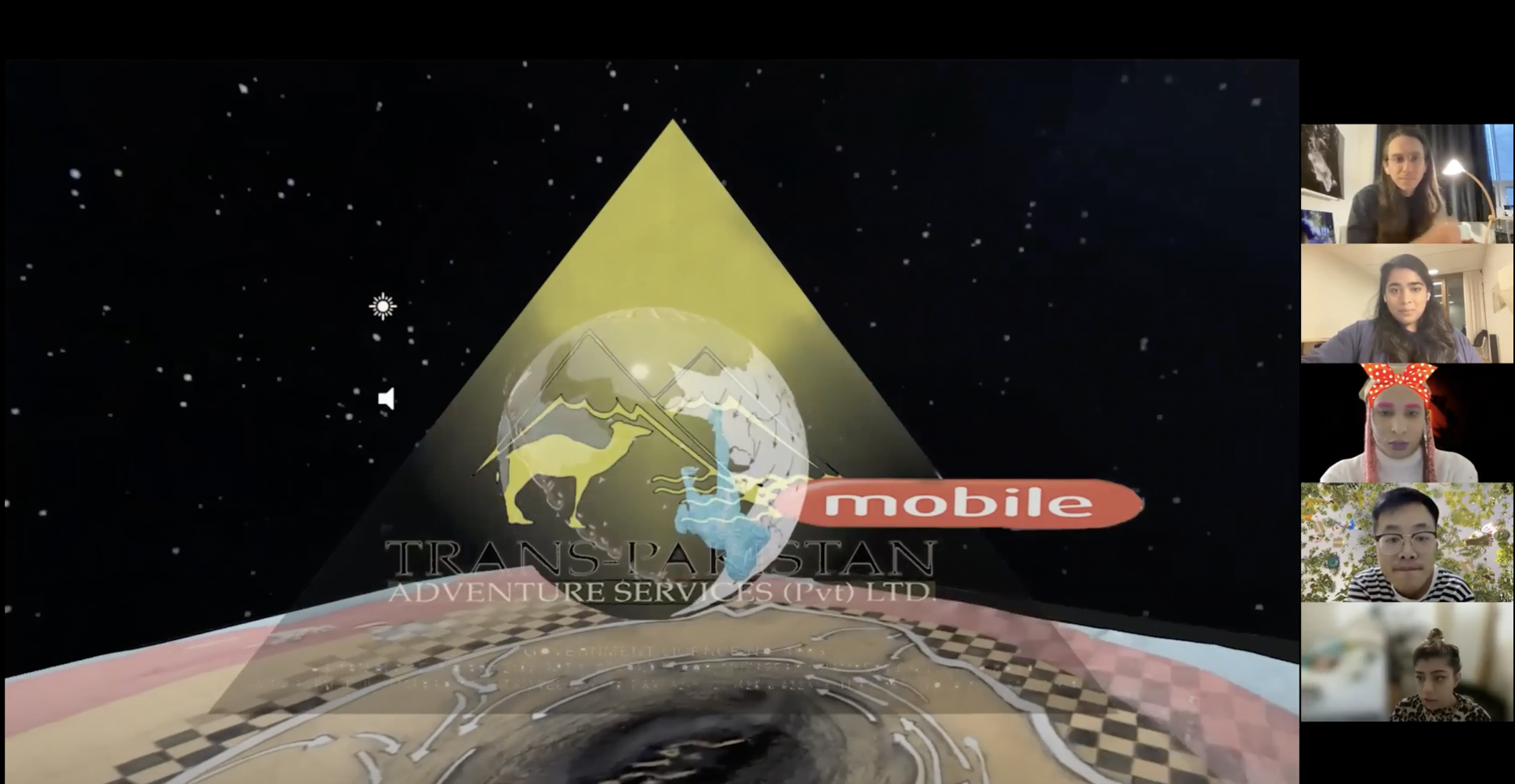
Nora Khan: I was hoping in these two roundtables to have a chance to slow down the feed, by introducing your work and how you engage with the digital, algorithmic, or software-based space—and the ways that you think about experimentation as well.
Ziyang, could you share more about the works in Where Did Macy Go? which are part of this show?
Ziyang Wu: I have minted six works for this show as a collection. This was a piece that I made in 2020, and the initial drive of this project was to document everything that was happening around us since COVID started: the protests, when everyone started to work at home, and how big companies started to declare that everyone could work from home forever. All these arguments came about from different social or political or cultural perspectives, and I wanted to create a piece that put them together. Where Did Macy Go? was initially an 11-episode video animation.
Chapter One started with this protagonist Macy, who participated in the protests and contracted COVID-19. Chapter Six was a recreation of Hugh Hefner's rounded bed in Chicago, which was seen as one of the first work-from-home models. Essentially, this series was an attempt to present all these arguments of the thinkers that I was inspired by. For instance, Han Byung-Chul, the Korean-born German philosopher argued that the reason why a lot of East Asian countries handled COVID more successfully was because of inherent Confucius obedience, but this was counter-challenged by the notion that many of these countries such have long been functioning in a Foucauldian obedience.
I was also inspired by Paul Preciado’s article in Artforum, “Learning from the Virus,” where he notes that the words community and immunity share the common root word, munis, munity. One has to be immunized to be in the community.
Nora Khan: Your working from home looks a lot more glamorous from some of us, especially with the Hefner bed and the sensual models surrounding. Taken all together, you have this way of compressing all of the wildness of this past year.
In terms of methods of experimentation in this space, one thing that you do really beautifully is compression. You distill theory; you distill different scenes into these symbolic setpieces where we can pick up and explore the memories of a year and a half of COVID, its madness. And we find the competing frames: Preciado's arguments, Foucauldian arguments, Byung-Chul Han’s arguments about what COVID has been doing to us psychologically and what it means to be digitally immersed in these spaces.
Mark Dorf: It was very interesting that you kept using the word document, where these are 3D renderings. I often think about 3D rendering, 3D animation in the context of the history of photography and filmmaking, where initially we saw these technologies in the early 20th century. It's creating this absolute truth, the reflection of reality, and over the course of the century, we've come to the realization that there's bias in everything. Calling a 3D animation or rendered still a document throws all of that out the window in a certain sense and says, "Well, if it's all biased, then I might as well make this entirely abstract and metaphorical and poetic image and call that a document." I really valued that in your description.
Nora Khan: Yes. Whether you're on TikTok, making Instagram stories, or using an AR filter—thinking of it as still documentation. Acknowledging how we interpret our world now is through constant mediation. In terms of the frame of the show, how do you think of experimentation in your practice?
Ziyang Wu: Apart from the narrative, or the visuals, one experiment was this posting on TikTok. You become a manager, trying to manage time and reach out to your audience. It's a bit similar to NFT artists now who spend so much time on Discord, are on Twitter every single second, to communicate with their collectors. Another experiment medium-wise were my AR filters. A lot of 3D works look very similar to each other, because there are only 10 different renderers altogether, and because of the machine or the program, or software.
Nora Khan: In the Hugh Hefner bed scene, there is an intentional tension between the smoothness and the chrome of the bed, and then the noise and contradiction and debates that are happening underneath. Something that you let come through your work is this collective audience that you're reaching out to - hundreds of thousands of people at a time, through all of these different mediums that you're actively embracing. Harnessing the power of distribution. And all of these competing ideologies are bubbling beneath.
Maybe we could go to Umber next, if you wanted to share your piece.
Umber Majeed: My piece is called fotocopy.net. Fotocopy with an F instead of a P-H, which is how it's pronounced in South Asia when you read the Urdu version of it. The video is technically a documentation of an interactive web environment that I have made.
It considers the context of the show, and the platform, and how NFTs work. I was interested in showing a screen recording. It's not actual documentation, but screen recording of the environment, of one of the environments, and adding a watermark.
This is a research project that I have worked on for about three years, called Trans-Pakistan Zindabad, which means long live Trans-Pakistan. Trans-Pakistan is a tourism company that my maternal uncle owned from the late 1990s to the early 2000s, because of the implications of the war on terror. The tourism company was based in Islamabad, Pakistan. I have been working with family archives for a long time, and I came by a lot of his materials. When I lived in Pakistan, I ended up being really interested in this idea of using his archive or the idea of tourism and leisure.
I've been researching this housing community in Lahore, Pakistan called Bahria Town (City of Future), which is known for land grabbing and corruption, as with many corporations in South Asia. And so, I've been looking at all these politics between what's housed in Bahria Town, which are replicas of the Eiffel Tower, a Statue of Liberty and a Trafalgar Square, but a Trafalgar Square renamed as Tawheed Square, which means oneness of God. Instead of having Nelson's column, which has a soldier on top, they have the name of God, and it's a sculpture. The highest point you'll see is the name of God. And you see these cars in this roundabout, circling it.
It is a very interesting amalgamation of the Islamic Republic of Pakistan, land politics, post- Pakistan’s creation in 1947. Who gets to own land, the military, private corporations, people who've been gentrified out? What does that gentrification look like? And what are the urban aesthetics that are clashing with each other? What does it mean to have these large scale replicas towering over and actually functioning as tourist sites?
Danielle Brathwaite-Shirley: When I see works like this, I get really excited, because I feel like there's a better use or a wider use of using this technology. Especially when you bring in people that weren't in the genesis of designing it, making it, and coding it. Where you get something that they would never have expected because they didn't design it for us to be involved.
What comes out of it is something that feels completely your own kind of texture, off the screen. I can feel your hand in it.
Nora Khan: Yeah. I love this description of what happens when we deploy software or technology that was built for a certain engineering class, or encoded class, or for a certain language. I think this is something we've all talked about with the crypto- space too. What does it mean to provide some friction here ? Or Umber, as you've described, what does loitering in this space mean?
This early 90s aesthetic in hyperreal image feeds? A moment of South Asian media life. It's not smooth. It's not slick. It’s crunchy, handmade, layered aesthetic. In that, you force us to slow down. I feel like I can loiter and linger, and I want to look at each object and how you have assembled it. Also, the world that you're building here. The imaginary that Trans-Pakistan meant for Western tourists. There's an irony and a lot of humor.
Danielle, can you share more on your piece?
Danielle Brathwaite-Shirley: This is my little avatar. You can tell I'm a nerd. So, often I have to do multiple things at once to focus. That's just how I am kind of programmed. I'm going to tell you a story, because I am much more of a story person than an explanation person.
The story is that I got my first flat. I'd never lived alone before, and my flat was not full of anything. The only thing that I actively didn't fill it with was mirrors. My house still has no mirrors in it. It became a point that it was often a long time between me looking at myself in the mirror. And it made it harder to look at myself, to be honest. It made it much harder to greet myself, to meet myself, to meet my gaze.
This idea of who I was, especially as I'm transitioning, really changed. Before, I was constantly looking at myself, constantly assessing who I was, what I looked like on a certain day, how I wanted to look. Having no mirrors in my house made me feel better, rather than focusing on how the way I look changes how people treat me.
So, during this time, I was trying to find other ways of liking how I looked and archiving myself. And I discovered this program called EbSynth, which was an AI that allowed you to rotoscope images, by changing one frame. All the little demon babies in my piece are me in my dressing gown with a towel over my head or wearing a hat.
I'm essentially holding a broom and moving at 3:00 AM. The story in my head was that the world has ended, and the only place that's alive that survived is my flat. And this person goes to the flat and there are no mirrors in the house. And the only way you can get access to the living room is if you have a magic mirror, which is just a working mirror, as all mirrors have been corrupted by the state.
This person says, "You don't have a mirror. You can't come into this house." And then you go into my bedroom and I'm on the bed. I have the last remaining mirror, and I give it away because I'm tired of looking at myself.
The progression in the story is that eventually we use the mirror to burn these people: you use their own reflection to harm them. And then you reconcile with your own reflection, and join it again instead of trying to run away from it.
That's the concept around this NFT. I usually make a mood setter before I actually do the work. And so, this was the mood set. This was the trans gang, as it was, before the work was made.
I also make these songs called Praise Trans Music. I often make them in place of spiritual practice. I don't have a spiritual practice. I grew up Christian, but I don't have one now. And in order to find a place within spirituality, which I assume trans people must have had some time in their lives, I make Praise Trans Music, which is essentially just music that's I imagine you might sing if there was a spiritual place that trans people could go to worship whatever, or each other. And so, this is my song.
Usually, I'm archiving someone else. Putting myself in the work was also an exercise of covering my face. I had to figure out how to put it in Blender, and put the environment that you walked through in that game. A lot of my films are based on games I wish existed.
Nora Khan: Mark, you have two pieces.
Mark Dorf: I’ve minted two works for this benefit, 05 Simulation, and 04 Continuum. They're part of a larger, ongoing, slow release of online works that complement the film A New Nature. I'm always thinking about narrative work. How does a work exist in exhibition when installed, whether it be a film, video, a photo sculpture? And then how does it exist on the web? Because these are distinctly blurring lines, but they are different spaces. A browser's a different experience than a film that's installed on a screen that's 20 feet tall with eight channel surround sound audio.
One thing that I think is really interesting and possible in the online space is that you're able to break away from the linearity of filmmaking and cinema. In having five different sections that you can move to at any given point in time, it's an entirely different experience from watching a film. I didn't just lift scenes directly out of the film and mint them as NFTs. Instead, I shifted them in certain ways where there might be some elements that are left out. There might be some new elements that aren't in the film.
The goal here is rather than creating a direction for the viewer to travel in like a linear film does, it creates an environment for the viewer to exist within that is giving the aura of the film, but it doesn't have a didactic dialogue perhaps that directs you so specifically. It has a more free form quality to it.
The film itself considers this future of nature, whatever that may be. It’s not about the doom and gloom of Hollywood, nor is it the utopia of Silicon valley. It is this meeting point of all of these things, none of which is really what we want, but it is what we are moving towards.
Ziyang Wu: I was thinking about all the layers that Bratton was talking about, from Earth to Earth layer or city layer, to an interface layer, to the user or non-user layer, and I see all these are taking place, or entangled, or intersected, or simultaneously happening in the work. And we're shifting back and forth through these layers and elements. I really, really enjoy it. It makes me think of the land, connected to the cloud or the data center on fragile agricultural land, or in the North Pole.
Mark Dorf: That's definitely something I was thinking about throughout all of the minted works and the film itself. So eventually this will be a series of 10 NFTs. I'm going at it slowly, releasing them slowly. But the camera itself moves around constantly. So there's drone footage, but it's not the drone footage of the almost pornographic landscape of YouTube where it's a dude on a mountain bike with like a drone going over the top. It's almost a feeling of surveillance like a security camera. When I was flying the drone, I was working with another ecologist that uses drones to scan the landscape and produces 3D meshes through photogrammetry. He creates these hyper-accurate, stitched photographs of an entire valley, which are unbelievable to look at. But he's able to document the times in which things bloom and the ways in which different plant populations can move around throughout the valley over the course of 10 seasons. When he is doing this, it's this grid-like pattern that he's programmed his drone to work on so that he can very accurately recreate these images.
I was really thinking about these practical and industrialized uses of drones and what it looks like from the point of view of this technological eye and the human eye and the eye of a tree. All these different things function together. These perspectives are important, they should be considered and they're all on a level playing field. Clearly there are power differentials between all of these different things, but the point of the film is to suggest and propose these things. It's still a perspective and we should be considering all these things in order to understand this larger system that we exist within. So it's good to hear from you that you're interested, or you see these stacks, as Bratton would call them, that are entangled.
It's not even just perspectives of things such as trees or drones, or cameras, or artists, but there are lots of design elements throughout. Menu buttons that pop up here and there. User interfaces. There’s constant design that we're looking through. There's cultures of technology, the user interfaces of technology, the points of view of technology, which I’m trying to put in one linear experience in the film version. In these versions online, there are these independent free floating environments, giving more of a feeling through soft, open-ended poetics rather than directed dialogue and spoken language.
Umber Majeed: Yeah. It seems like a lot of the NFTs are visceral. It's a really intense gesture. What were the aesthetic decisions? I see how the interface is present, but there's also the play of scaling where there's ground level and also the drone footage, but also microscopic and certain elements when you zoom in enough.
Mark Dorf: Yeah. The aesthetics are quite sleek, but there's a very conscious decision to do that. I don't think that my choice of sleekness or slickness or refinement was necessarily just a product of the software that was used. When I was working on this, I wanted to meet the level of product design in the work itself, so as to exist on the same level of aesthetic language as an app that you have on your phone, or a video game that came out of a Montreal-based development company, or all of these high end productions. About the different levels of production; that is just a product of a different kind of lived experience. I think it shouldn't be so much like a value system of one being greater than the other. It's something that is just produced differently.
Nora Khan: There are a lot of ways to talk about experimentation in your work, but maybe you could tell us how you think of it?
Mark Dorf: Within the context of the set, I’m toying with ideas of the future, which in and of itself requires a base level of experimentation or abstraction. The biggest point of experimentation is my thinking about how I translate a linear film experience or installation experience into something that is a version of itself online, but different from the film installation itself. Without trying to be equivalent in any way. Danielle, you said you were creating moods. These are moods. These are washes from the film. The film doesn't exist on the web the way it would when it's installed, so I don't want the work to be misrepresented in that manner. I'm just trying to figure out ways to represent these ideas on the web, but also just trying to figure out how this can exist on the web versus in real life.
Nora Khan: Well thank you Mark, for sharing these pieces and the world, and Danielle, Ziyang, and Umber as well, and for having this awesome conversation. I'm just very excited that your work is part of such an amazing show.
Contributor Biographies in Their Words:
Nora Khan: “I'm a writer and an editor at Topical Cream for 2021. I'm a curator of software-based and algorithmic artworks. I was at Rhizome for a long time as an editor.”
Ziyang Wu: “I’m an artist based in New York and Hangzhou, which is a city an hour away from Shanghai. I've been making 3D animation, augmented reality, interactive video installation and AI simulation for the past few years, focusing on topics such as trade war, the Chinese social credit system, Benjamin Bratton's stack theory, and the concept of neocolonialism—particularly China's development in Southeast Asia and Africa.”
Umber Majeed: “My name's Umber, and my pronouns are she/her. I'm a multidisciplinary visual artist and educator. I am not trained necessarily in art and technology, but in visual art. A lot of my work is based on using family archival material that looks into state infrastructure. Pakistan, where I'm from, where my parents are from, is often a case study to look at larger national and political projects regionally. For this show, I've been looking at a portion of my research and playing with copy culture, kitsch, South Asian digital kitsch, and urban design.”
Danielle Brathwaite-Shirley: “I would probably consider myself a game designer/archivist. I work with a team of Black trans people to archive our experience in the present, usually in the form of an interactive game, and using the audience as a medium. You experience the length of the work, and it’s all based on participation. How much the work speaks to you, and what the work says is completely dependent on your identity, and your choices.”
Mark Dorf: “I'm an artist based in Brooklyn, New York. I work predominantly with photography and video sculpture installation, digital media. My work is concerned with what Western culture often refers to as nature, urbanism, design, and technology. Rather than look at these things as independent, categorically separate subjects, I think of them as an entangled system—how they interact with one another, produce one another, and are dependent upon one another. I just finished up a big video installation project called, A New Nature, which considers very specifically the future of what Western culture calls nature. It describes a future that is not necessarily one of doom and gloom that Hollywood so often describes, but neither is it the utopian future that Silicon Valley portrays. It's sort of an abject, beautiful future of this fusing of technology, landscape, and design.”
Read more
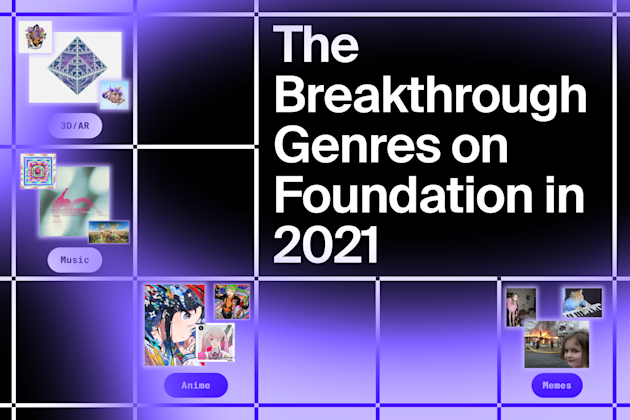
The Breakthrough Genres on Foundation in 2021
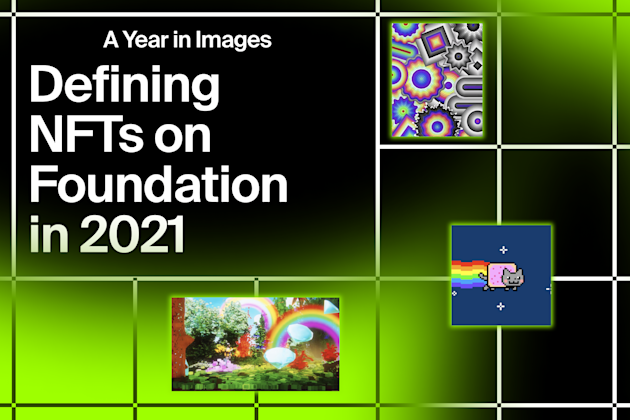
A Year in Images: Defining NFTs on Foundation in 2021
